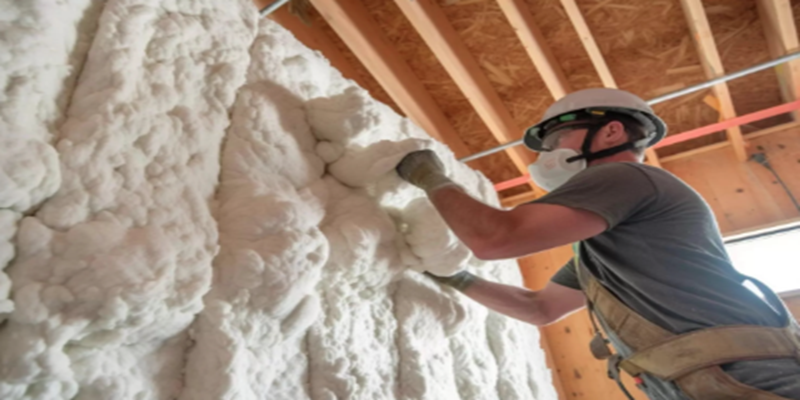Sprayed foam insulation is a versatile and highly effective solution for improving energy efficiency and maintaining comfortable indoor climates. As a polyurethane catalyst supplier, we provide catalysts like MXC-5 and MXC-8 that are integral to the production of high-quality sprayed foam insulation materials. These materials are used in various applications, including walls, attic surfaces, and under floors, and they come in two primary types: open-cell and closed-cell foam.
Types of Sprayed Foam Insulation
1. Open-Cell Spray Foam:
Open-cell foam is softer and more flexible than closed-cell foam, with a lower density. Its structure consists of interconnected cells that remain open, allowing air to fill the spaces within the material. This type of foam is generally used in interior applications, like walls and ceilings, where it helps reduce noise and provides moderate insulation with an R-value of approximately 3.5 per inch. Although it has a lower R-value than closed-cell foam, it is still effective at reducing air leakage and enhancing indoor comfort.
2. Closed-Cell Spray Foam:
Closed-cell foam is denser and more rigid due to its compact cell structure, which restricts airflow and creates a highly effective air barrier. This type is well-suited for exterior applications, such as roofs, crawl spaces, and basements, where moisture resistance and structural reinforcement are essential. Closed-cell foam provides an impressive R-value that can exceed 7.0 per inch, making it ideal for enhancing energy efficiency and reducing utility costs by preventing heat transfer.
Application Areas
Sprayed foam insulation is adaptable to a wide range of residential, commercial, and industrial applications:
- Walls: Insulating walls with spray foam creates a continuous air barrier, reducing drafts and providing excellent thermal resistance. It also contributes to soundproofing, particularly in multi-family housing or buildings located near noisy environments.
- Attic Surfaces: Spray foam is especially effective for attics, as it seals gaps and crevices, preventing air leakage and minimizing the exchange of outdoor air. This helps to regulate indoor temperatures, reducing the load on heating and cooling systems.
- Under Floors: Spray foam under floors can help to insulate and seal areas that are typically overlooked, such as crawl spaces. Closed-cell spray foam is particularly useful in these areas as it can withstand exposure to moisture and help deter mold growth.
Benefits of Sprayed Foam Insulation
The primary advantage of sprayed foam insulation is its ability to achieve high R-values, which measure the material’s resistance to heat flow. Higher R-values correlate with better climate control and energy efficiency. By using sprayed foam insulation, homeowners and businesses can experience reduced energy costs, improved indoor comfort, and enhanced structural stability. Furthermore, because sprayed foam insulation adheres directly to surfaces, it can also reduce the risk of moisture accumulation, thereby protecting the building structure over time.
In conclusion, sprayed foam insulation offers a versatile solution for a wide range of applications, helping to optimize energy efficiency and promote a comfortable living or working environment. With catalysts like MXC-5 and MXC-8, the production of high-quality polyurethane foam is made possible, enabling the reliable performance of sprayed foam insulation across diverse settings.
Post time: Oct-10-2024

